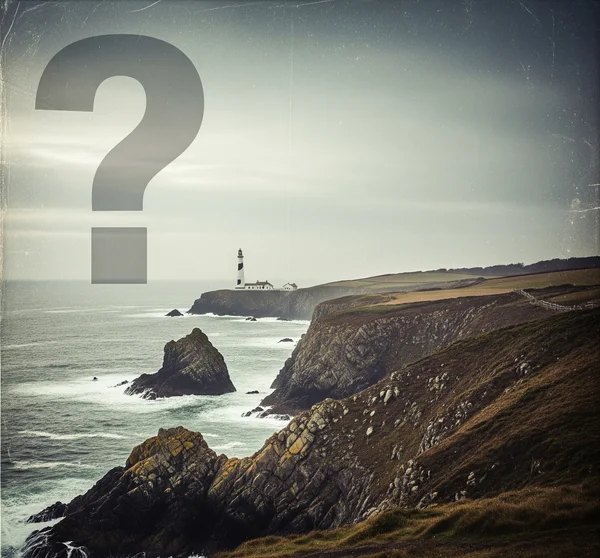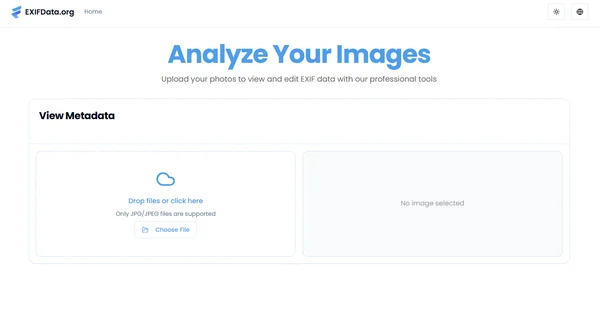Case Study: EXIF Data Solves Photography Mystery
Every photograph tells a story, but sometimes the most intriguing tales are hidden within its unseen data. Beyond the visual, EXIF data can hold crucial clues, transforming a simple image into a key piece of a puzzle. This case study delves into how EXIF data analysis and metadata investigation helped unravel a perplexing photography mystery, showcasing the power of photo forensics. Can EXIF data be faked or altered? We'll touch on that too. For those keen on uncovering hidden details in images, exploring EXIF data tools can be an enlightening start.
The Mystery: Setting the Scene
Imagine an old, dusty photo album discovered in an attic. Among a collection of clearly labeled family portraits, one photograph stands out: a stunning, yet unlabeled, landscape. The scene is unfamiliar, the era uncertain. The family has no recollection of this place or who might have taken the picture. The mystery: Where was this photo taken, when, and by whom? This is a classic scenario for a metadata investigation.

The Investigation Begins: Initial Observations
Visually, the photograph depicted a rugged coastline with a distinctive lighthouse in the distance. The style of clothing worn by a barely visible figure in the foreground suggested a mid-20th-century timeframe, but this was purely speculative. The print quality offered few clues. Traditional methods of identifying the location through landmarks proved challenging due to the generic nature of the coastline and the lack of prominent, easily searchable features. This is where photo forensics using digital data, if a scan of the original negative or an early digital copy existed, could play a role. For our case study, let's assume a high-quality digital scan of the original print was available.
Digging Deeper: Uncovering Clues with EXIF Data Analysis
The first step in modern photo forensics is to examine the digital file for any embedded metadata. Even scans can sometimes retain information if processed correctly, or more ideally, if an original digital version surfaces.
Accessing the EXIF Data
Using an EXIF data viewer, like the ones available for easy online EXIF access, the investigators (or in this case, curious descendants) would upload the scanned image. While a scan of an old print won't have original camera EXIF, if the scan itself was made by a device that embeds EXIF, that scanner's data might be present. However, for the sake of this exif data case study, let's imagine a scenario where a much older digital copy of the photo was later found on an old hard drive, one that did retain original camera EXIF.

Key EXIF Fields and Their Revelations
Upon examining this hypothetical digital copy, the EXIF data analysis yielded several crucial pieces of information:
- Date and Time Stamps: The "Date Time Original" tag indicated the photo was taken on June 15, 1958. This immediately narrowed down the timeframe significantly, aligning with the visual estimate.
- Camera Model and Make: The EXIF data revealed the camera was a Kodak Brownie Hawkeye, a popular model in the 1950s. This further corroborated the date.
- GPS Coordinates: Surprisingly, this older digital file, perhaps re-saved or processed at a later date with software that could add GPS if it was known, contained no GPS tags. This meant direct location identification wasn't immediately possible from this specific field. This is a common challenge in metadata investigation of older files.
- Software/Editing Information: Minimal software tags were present, suggesting the digital file was a relatively raw transfer or had undergone very basic processing years ago.
- Thumbnail Analysis: The embedded thumbnail was identical to the main image, offering no additional visual clues in this instance.
Connecting the Dots: How EXIF Clues Converged
While the lack of GPS was a setback, the precise date and camera model were solid starting points for further image analysis exif examples. The investigators now knew when and with what type of camera the photo was taken.
The Breakthrough: How a Specific EXIF Tag Cracked the Case
The real breakthrough in this metadata investigation came not from a common tag, but from an often-overlooked field: the "UserComment" tag. Deep within the EXIF data, a previous owner or archivist had, at some point, added a cryptic note: "Pemaquid Trip - LH."
This seemingly small piece of EXIF data analysis was the key. "LH" likely stood for "Lighthouse." A quick search for "Pemaquid Lighthouse" combined with the 1950s timeframe led the family to discover the Pemaquid Point Light in Maine, USA. Comparing the mystery photo with historical images of Pemaquid Point Light confirmed a perfect match.

The Solution: The Photography Mystery Unveiled
Thanks to the "UserComment" tag discovered through EXIF data analysis, the mystery was solved. The unlabeled landscape was a photograph of Pemaquid Point Light in Maine, taken on June 15, 1958, likely with a Kodak Brownie Hawkeye camera during a family trip. This case study highlights how even obscure metadata can be pivotal.

Lessons Learned: The Power of Metadata in Investigation
This exif data case study underscores several important lessons:
- EXIF data can hold far more than just technical camera settings. User-added comments, descriptions, or even copyright information can be invaluable.
- Effective metadata investigation requires thoroughness. Don't just look at the obvious tags.
- Even without GPS, other EXIF fields can provide crucial contextual clues for photo forensics.
- The ability to find information from photo exif is a powerful tool for historical research, family archiving, and even professional investigations.
Tools for Your Own EXIF Data Investigations
Inspired to conduct your own metadata investigation? Several tools can help:
- Online EXIF Viewers: For quick and easy access to EXIF data without installing software, platforms like our EXIF data viewing service are ideal.
- Desktop Software: Tools like ExifTool (command-line) or graphical viewers/editors offer more in-depth EXIF data analysis capabilities.
- Photo Management Software: Programs like Adobe Lightroom or Bridge also display extensive metadata.
Understanding EXIF Data in Analytical Contexts
Can EXIF data be faked or altered?
Yes, EXIF data can be modified or entirely fabricated using EXIF editing tools. This is a critical consideration in forensic photography and metadata investigation. While it can be altered, sophisticated EXIF data analysis can sometimes reveal inconsistencies that suggest tampering.
How reliable is EXIF data for forensic photography?
EXIF data can be highly valuable in photo forensics, providing leads like timestamps, camera models, and sometimes location. However, due to the possibility of alteration, it should always be corroborated with other evidence. Its reliability increases if the chain of custody for the digital file is secure.
What are the ethical considerations when conducting metadata investigation?
When analyzing photos, especially those not your own, respect privacy. Accessing or using metadata for malicious purposes or to invade someone's privacy is unethical and potentially illegal. Ethical metadata investigation focuses on legitimate inquiry and respects data ownership.
Are there limitations to what EXIF data analysis can reveal?
Absolutely. EXIF data is only as informative as what was originally recorded or later added. If GPS was off, no location will be present. If a camera is old, it records less data. Furthermore, data can be stripped. Thus, EXIF data analysis is a powerful tool, but not a magic bullet for every image analysis exif examples.
More Than Meets the Eye in Every Image
This case study demonstrates that every image has the potential to tell a story far beyond its visual content. The EXIF data within can unlock mysteries, provide historical context, and offer invaluable insights through careful metadata investigation and EXIF data analysis. We encourage you to explore the metadata in your own photos – you never know what hidden stories you might uncover.